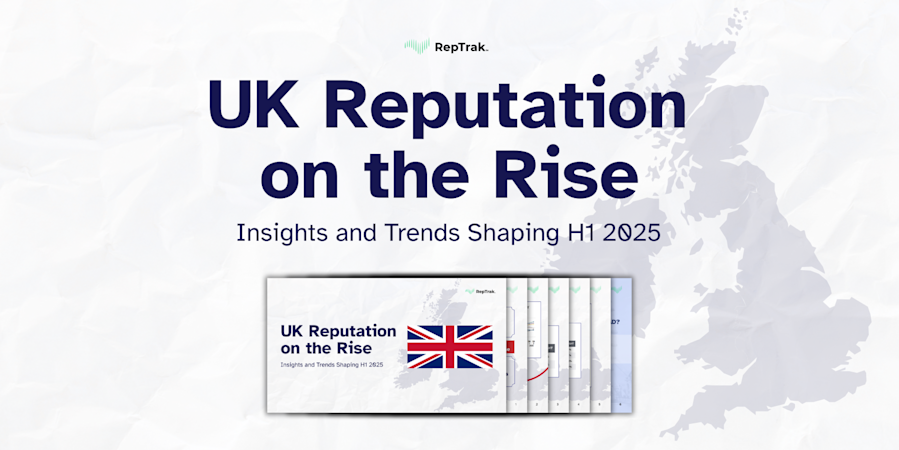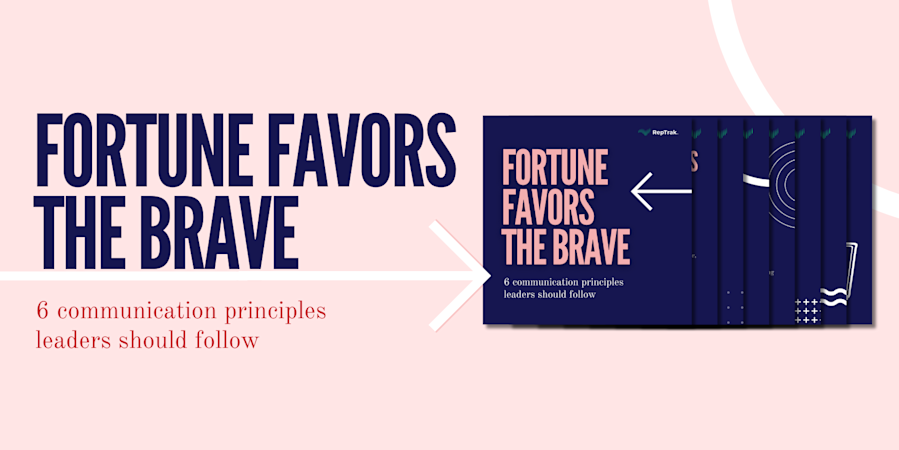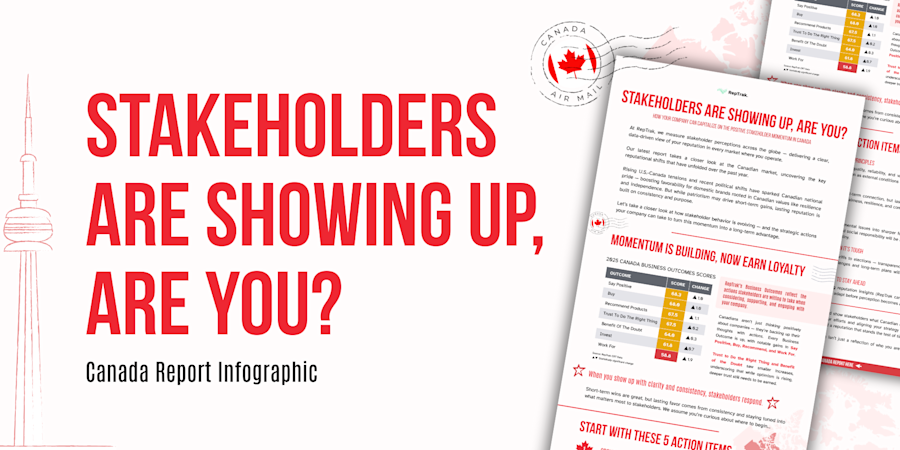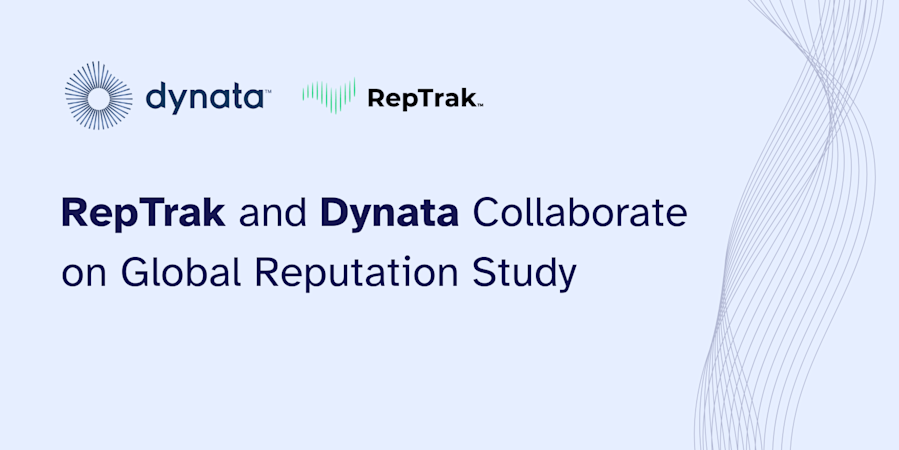6 Ways to Win at Talent Acquisition
Blog Post21 Aug, 2019
In the digital age, every organization operates in a fishbowl. In an arena where internet vigilantism is on the rise, and employee activism can affect significant change, in sometimes uncomfortable and very public situations, organizations need to take the lead on both understanding the critical link between reputation and talent, and how to manage its effects to win at talent acquisition.
How does reputation affect talent acquisition?
“Reputation is the raw reaction that stakeholders have towards your company,” says Isadora Levy, Senior Research Manager with The RepTrak Company, noting, “that reaction will impact how they behave towards you and how loyal they are as consumers. Also, if they trust you, they’re more willing to give you the benefit of the doubt and will consider you as a potential employer over another organization who hasn’t considered the impact of their reputation on their talent management strategy.”
According to the 2019 Global RepTrak 100 survey, which presents the world’s top 100 companies with the best reputations, there are three attributes which most shape the reputation of a company. These are whether equal opportunities are offered in the workplace, employees are rewarded fairly and if there is a demonstrated concern for employee wellbeing which goes beyond lip service to show respect for the employee as an individual and the employer as a caring entity.
For many employers, this may mean a strategic shift away from the more traditional understanding of talent acquisition, and how to attract and retain the very best talent available in the marketplace. So the question remains; what can CHROs do to ensure reputation remains at the core of the talent strategy?
A closer look at the key issues
When you break down the RepTrak data, which spans nearly 230,000 ratings from 140 employers across 15 different markets, the majority of organizations are receiving an average rating when it comes to the workplace dimensions that affect talent acquisition.
Further, there is a clear gap when it comes to the attribute which matters most to reputation—the concern for health and well-being of employees.
As Levy notes, “If most companies are getting uninspiring workplace scores, it's clear there’s a strategic gap when it comes to taking actions which will lead to an organization becoming an employer of choice which will stand out in an employee-driven market.”
How can CHROs move forward?
If you consider the top three companies in the 2019 Global RepTrak 100—Rolex, LEGO, and The Walt Disney Company—they all invoke varying feelings of nostalgia and exclusivity that lead to a feeling of belonging which CHROs can pull from when deciding which tactics to focus on.
“One of the first things companies need to realize, is that each employee is starkly different, and the recognition, celebration, and respect for that unique individual is going to remain a driving force in competition for talent,” says Rebecca Reott, the RepTrak Company's Senior Director of Global HR.
These themes should be of vital concern to CHRO’s and their departments, including the seven following tactics.
1. Provide purpose-driven work.
To truly benefit from that engagement, and ensure it translates into talent attraction, employees must not only feel their jobs have value, but that they are working together towards a mission and vision that is worthy of respect.
Says Reott, “When a person is emotionally involved with your brand, they are much more likely to choose you as an employer—and promote you to others as an excellent place to work.”
While CHROs can’t control the product and service aspect of an organization, they can help determine how the overall reputation of an organization affects the employer brand and candidate experience. If the quality and how you stand behind them is critical to consumers, the quality of the full cycle candidate experience deserves the same rigor and control.
2. Improve the mental health of your employees.
Increasing awareness around workplace mental health remains a hot topic in the HR landscape, and successful integration into an organizations psyche involves a shift in how we have traditionally perceived mental health at work—and how to create psychological safety within an organization.
“Psychological safety revolves around an inclusive environment where people feel safe being themselves, and more importantly, feel safe speaking up and speaking candidly about the challenges they see within an organization,” says Reott.
Opening new channels of feedback, and ensuring those channels are accessible at all levels of the organization is another powerful way to ensure employees feel heard. “That includes embracing healthy conflict as it arises,” says Reott, noting, “with the emphasis being on ‘healthy.’”
3. Seek out feedback in all its forms.
Employers who seek out employee feedback are on the right track when it comes to retention, but those who ignore the feedback which exists via candidates are missing out on a critical link.
“It’s not enough for employers to understand their employees—they need to understand the candidates they would like to attract,” says Reott. “By seeking out feedback and perceptions from candidates and consumers alike will provide key information on how your brand is being perceived in the market and will dictate what you should be doing to improve your reputation from an employer perspective.”
4. Improve diversity and inclusion.
Diversity and inclusion is a driver that affects everyone and is of utmost importance to employers and employees in the workplace today, beginning with a new understanding of what diversity entails.
“Diversity certainly includes the inherent traits a person holds, but organizations who want to win at talent acquisition need to look at including the specific acquired traits which will further enhance any diversity and inclusion strategy,” notes Reott.
By respecting the diversity of thought and lived experience of its employees, employers naturally attract individuals with a broader background, generational expertise and skill set which will produce the right type of innovation that makes an organization adaptive to change.
5. Make data-driven decisions.
The role of HR leaders is becoming more data-oriented. Tools to assess an employer’s ability to be attractive in the marketplace will remain critical for organizations who choose to foster the vital link between reputation and talent.
One such tool is RepTrak, which provides key performance indicators across critical dimensions, including total rewards, professional development, work environment, corporate responsibility, and leadership. Increasing a company's effectiveness in attracting talent reduces recruitment costs and the time it takes to onboard them, which directly impacts profitability.
6. Embrace employee activism.
Despite recent news reports from high-profile organizations who have had to shift directions, sometimes dramatically, as a result of employee pressure; there does remain a place for employee activism as a positive force—if an organization learns to embrace it from the beginning.
CHROs can play an integral role by checking the current leadership values of an organization and developing new policies that reflect the core vision and mission. Employees view themselves at citizens of an organization, and, like providing work of value, they want to feel pride at not only their output but their employer’s footprint on society.
Melanie LoBue Senior Director of Global Marketing The RepTrak Company @melanielobue






